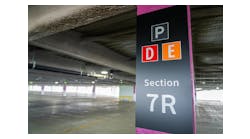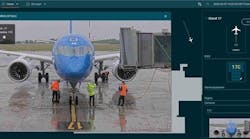A year-long study to determine the capacity of the current terminal at John Glenn Columbus International Airport has started. A separate analysis will be conducted to refine the scope and cost of a new terminal and related development.
“The current 1950s-built terminal has been expanded and renovated over time but at a certain point we will reach diminishing returns,” said Elaine Roberts, president & CEO. “We know the recent $80 million modernization buys us another 10 years in the terminal. However, by the mid-2020s we could be serving around 9 million passengers a year, which is when we expect to face capacity issues including unreasonably long checkpoint lines, overcrowded facilities and a shortage of airline space. This study will help us determine if additional investments buy us additional time in the current terminal or if it’s time to begin work on a new facility.”
Conducted by Ricondo & Associates, the study includes examining aging physical assets such as baggage systems, elevators and escalators, and temperature control systems.
“While a new terminal has long been a part of the airport’s master plan, our intention has always been to open the new terminal when warranted by demand and not a moment sooner,” said Roberts. “This approach allows us to fully maximize the life of our current terminal and provides additional time to establish funding sources for the new terminal.”
The new terminal and related development, such as a parking garage and utility upgrades, were conceptually estimated to cost $1.3 billion. The second aspect of the $800,000 Ricondo study will refine the scope of development related to the new terminal and provide updated cost estimates.
“John Glenn International is financially self-sufficient and no local tax money will be used for the new terminal and related development,” said Roberts. “We will tap into a variety of funding sources including cash reserves, funds from the Federal Aviation Administration and passenger fees. Long-term debt in the form of issuing bonds will also be necessary.”
Design of a new rental car facility, which is also part of the airport’s master plan, begins this fall to alleviate capacity issues in the parking garage. Rental car activity currently takes place on levels one and two of the parking garage, which routinely fills to capacity multiple times a week. The new rental car facility, which is scheduled to open in 2020, will be built near the site of the new terminal. When the new terminal opens, a sky bridge will connect the two facilities. Until that time, rental car customers will be bussed to and from the current terminal.
Funding for the $150 million rental car facility will come from user fees. Bonds will be issued against future rental car user fees to facilitate the construction. Construction is slated to occur in 2018 and 2019 with the facility scheduled to open in 2020. Freeing up the first two levels of the existing garage will increase the number of publically-available garage spaces by 42 percent to nearly 4,500 spaces.

